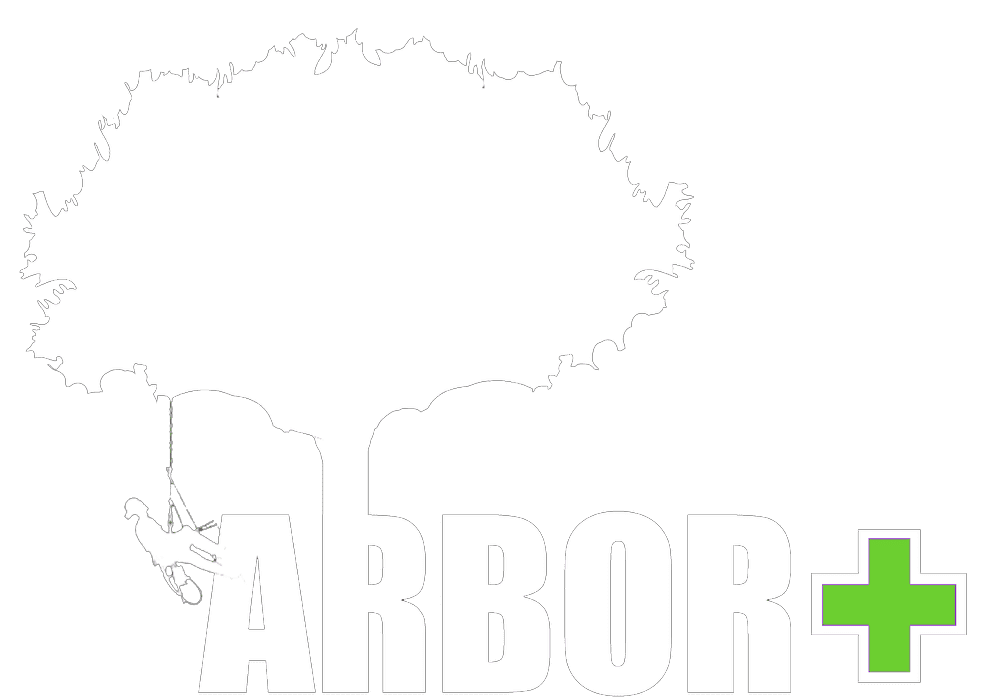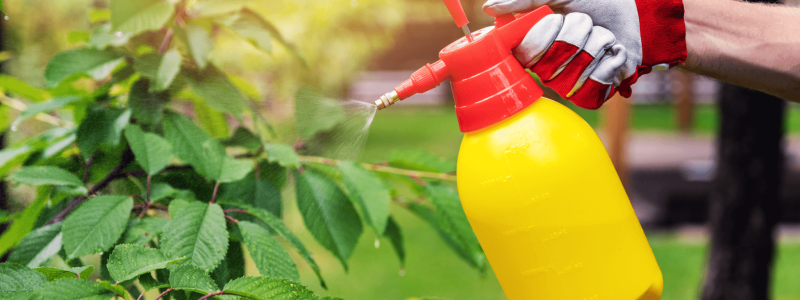Arbor Plus is based in Salt Lake City, Utah, and works across the state on commercial and residential projects. A relationship-driven company, this expert team of arborists is known for their strong communication, exceptional work ethic, and professionalism.
When it comes to the health of your trees, pests can be a silent but deadly threat. One of the most insidious tree pests is the bark beetle, particularly the Ips Beetle, which can wreak havoc on your trees without you ever seeing them. These tiny flying beetles lay eggs that eventually hatch into larvae that burrow into the tree and feast on the cambium layer, located just beneath the bark. This cambium layer is vital for the tree’s health as it plays a crucial role in transporting water, nutrients, and carbohydrates between the roots and leaves. As the larvae tunnel through the cambium layer, they effectively cut off communication between the roots and leaves, leading to the tree’s decline. It’s akin to severing someone’s veins in the human body.
One of the most important factors in protecting your trees from pests is proper sunlight and watering. Trees need plenty of direct sunlight to photosynthesize and stay healthy; without it, they are more susceptible to pest infestations. Additionally, trees must be watered regularly to ensure that their roots remain healthy and strong. Be sure to water your trees at least once a week during periods of drought or heat waves.
The Trifecta: Soil Maintenance, Pruning, and Mulching
Healthy soil is essential for the health of trees and their ability to resist pests. It helps to keep the tree’s roots well-nourished and provides a strong base for growth. To prevent pest problems, it is important to maintain the quality of your soil by adding compost, fertilizers, and other organic materials. Additionally, checking the pH levels regularly can help. Pruning is an important part of preventing pest infestations in trees. By regularly pruning away dead or damaged branches, you can reduce the number of pests that are able to establish themselves on the tree. It is also beneficial to prune away overcrowded branches as this can create a more hospitable environment.
In addition to proper pruning and soil maintenance, there are other preventative measures you can take to protect your trees from pests. Spraying or injecting your tree with the correct insecticide is one of the most effective ways to protect it from bark beetles and other pest insects.
Mulch is an important tool for preventing pest infestations in your trees. Mulching helps to insulate the tree’s roots from temperature changes, which can be a major factor in pest invasions. Additionally, mulch helps to keep the soil moist and prevents weeds from taking root near the base of the tree, which can provide an ideal environment for some pests. Mulch can also help to prevent soil compaction, which can reduce the amount of air and water available to the tree’s roots.
Taking the time to properly care for your trees and protect them from pests will ensure that they remain healthy and vibrant for years to come. By taking preventive measures such as proper pruning, soil maintenance, mulching, and insecticide applications you can minimize the risk of pest infestations.
Using Traps as Care
One way to monitor existing pest infestations is to use traps. Pheromone traps, for example, lure pests with a scent and trap them so they can be removed from the tree. These traps are often effective against bark beetles and other species that feed on trees. Other types of traps can be used to catch caterpillars or leaf-feeding insects. Traps should be monitored regularly and emptied when full in order to keep the pest population under control.
Physical removal of pests is another option for treating existing infestations. For many species of bark beetles, the larvae can be physically scraped away from the tree’s surface with a tool such as a scraper or knife blade.
Identifying and Treating Bark Beetle Infestations
Recognizing the signs of a bark beetle infestation is crucial for early intervention. Look for symptoms such as yellowing or wilting leaves, crown dieback, as well as sawdust-like frass near the base of the tree, which is a clear indicator of bark beetle activity.
Treatment for bark beetles typically involves two primary methods: foliar sprays and trunk injections. Foliar sprays should cover the entire canopy of the tree and need to be applied twice a year for optimal protection. These treatments are most effective when the beetles become active, usually when temperatures reach around 60 degrees Fahrenheit, which can be as early as April and last until October or November, depending on your location.
Alternatively, trunk injections offer longer-lasting protection, with the insecticide remaining effective for up to two years. This method involves drilling into the base of the tree and setting up a pressurized system that delivers the insecticide to the upper parts of the tree. To ensure your tree’s health, remember to treat it every other year with this method.
Turpentine Beetles: Another Threat to Conifers
Turpentine beetles pose a similar threat to conifers as the ips beetles. Turpentine beetles typically enter the tree near the base, within the first few feet. Like with bark beetles, treatment options include foliar sprays, basal trunk sprays, and trunk injections. For the best results, consider using a combination of these methods to protect your trees effectively.
Dealing with Pitch Moths
Pitch moths are another common tree pest, but they tend to focus on trees with fresh wounds or cuts. These moths enter the tree through these openings, leading to the oozing of sap from the affected areas. While pitch moths are more of a nuisance than a deadly threat to mature trees, they can still disrupt your tree’s health. Effective treatments for pitch moths include foliar sprays and trunk injections. However, it’s crucial to avoid pruning pine trees after the beginning of March, as fresh cuts attract these pests.
Other Common Tree Pests
Apart from bark beetles, turpentine beetles, and pitch moths, there are other pests that can affect your trees’ health. Here are some additional tips for dealing with them:
Spruce Spider Mites
Spruce spider mites can cause interior needle bronzing and aesthetic issues in your trees. They are active during cooler temperatures, typically in April and May. Consider using horticultural dormant oils early in the season to control their population.
Scale Insects
Scale insects come in two varieties: soft scale and hard scale. They both damage trees by sapping nutrients. Effective treatment depends on timing, and it’s critical to treat them during their crawling stage. Monitoring growing degree days can help you determine when this stage occurs.
Leaf Miners
Leaf miners are more of an aesthetic nuisance as they create unsightly damage to your tree’s foliage. They can lead to premature leaf drop and a less appealing appearance. You can target leaf miners with foliar sprays when they are active or opt for systemic treatments in early spring to prevent infestations.
In conclusion, caring for your trees involves vigilance against various pests that can compromise their health and beauty. Identifying the signs of infestations early is key to successful treatment. By understanding the behavior of these pests and choosing the right treatment method, you can protect your trees and ensure they thrive for years to come. Regular tree care and maintenance are essential for keeping these silent threats at bay.
Read our Ultimate Guide to Caring for Your Trees. To see some of the projects we’ve worked on, check out our Instagram.

